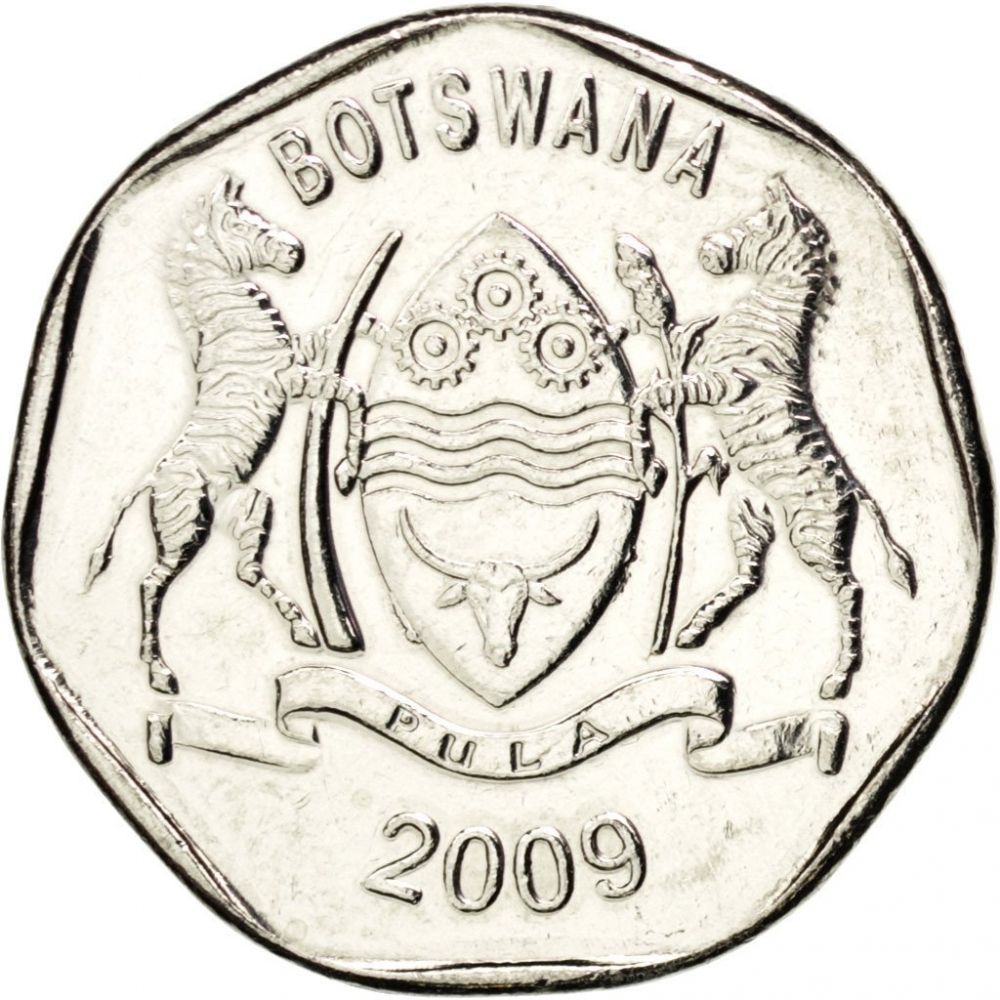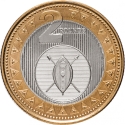You are about to finish your registration. Please check your mailbox (including spam folder). There should be a letter with a confirmation link. Check setting to make sure that your e-mail address is correct.
Send letter againDescription
Engraver: Michael Hibbit
Obverse

|
Botswana coat of arms, date below. BOTSWANA |
|---|---|
Reverse

|
Brahman cattle left, denomination above, word IPELEGENG below. 25 |
| Edge |
Characteristics
| Material | Nickel Clad Steel |
| Weight | 3.5 g |
| Diameter | 20 mm |
| Thickness | 1.8 mm |
| Shape |
|
| Sides | 7 |
| Alignment | Medal |
| Mint |
South African Mint (SA Mint)
|




_New_Pence_50/1969-1981_12.06.2017_12.40-125.jpg)
_New_Pence_50/1969-1981_12.06.2017_12.40_01-125.jpg)
_Pounds_50/1998-2006_01.10.2024_14.38-125.jpg)
_Pounds_50/1998-2006_01.10.2024_14.38_01-125.jpg)